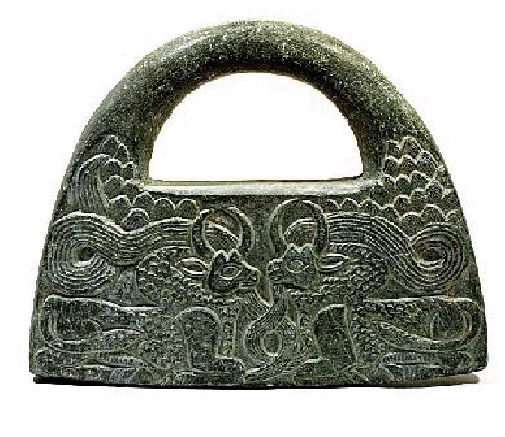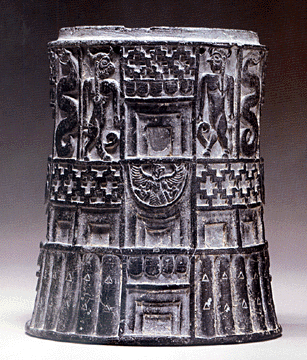Sara Goudarzi
Date: 07 March 2007 Time: 04:01 AM ET
http://www.livescience.com/1339-travel-time-scientists.html
The urge to hug a departed loved one again or prevent atrocities are
among the compelling reasons that keep the notion of time travel alive
in the minds of many.
While the idea makes for great fiction, some scientists now say traveling to the past is impossible.
There are a handful of scenarios that theorists have suggested for how
one might travel to the past, said Brian Greene, author of the
bestseller, “The Elegant Universe” and a physicist at Columbia
University.“And almost all of them, if you look at them closely, brush
up right at the edge of
physics as we understand it. Most of us think that almost all of them can be ruled out.”
- Vote for Your Favorite Time Travel Tale
The fourth dimension
In physics,
time
is described as a dimension much like length, width, and height. When
you travel from your house to the grocery store, you’re traveling
through a direction in space, making headway in all the spatial
dimensions—length, width and height. But you’re also traveling forward
in
time, the fourth dimension.
“Space and time are tangled together in a sort of a four-dimensional fabric called
space-time,”
said Charles Liu, an astrophysicist with the City University of New
York, College of Staten Island and co-author of the book “One Universe:
At Home In The Cosmos.”
Space-time, Liu explains, can be thought of as a piece of spandex with
four dimensions. “When something that has mass—you and I, an object, a
planet, or any
star—sits
in that piece of four-dimensional spandex, it causes it to create a
dimple,” he said. “That dimple is a manifestation of space-time bending
to accommodate this mass.”
The bending of space-time causes objects to move on a curved path and that curvature of space is what we know as
gravity.
Mathematically one can go backwards or forwards in the three spatial
dimensions. But time doesn’t share this multi-directional freedom.
“In this four-dimensional space-time, you’re only able to move forward in time,” Liu told
LiveScience.
- Video: Can You Time Travel?
Tunneling to the past
A handful of proposals exist for time travel. The most developed of these approaches involves a
wormhole—a hypothetical tunnel connecting two regions of space-time. The regions bridged could be two completely different
universes or two parts of one universe. Matter can travel through either mouth of the wormhole to reach a destination on the other side.
| Top 10 |
|
Vote for Your Favorite
Time Travel Tale
|
|
“Wormholes are the future, wormholes are the past,” said Michio Kaku,
author of “Hyperspace” and “Parallel Worlds” and a physicist at the City
University of New York. “But we have to be very careful. The gasoline
necessary to energize a time machine is far beyond anything that we can
assemble with today’s technology.”
To punch a hole into the fabric of space-time, Kaku explained, would
require the energy of a star or negative energy, an exotic entity with
an energy of less than nothing.
Greene, an expert on
string theory—which
views matter in a minimum of 10 dimensions and tries to bridge the gap
between particle physics and nature's fundamental forces, questioned
this scenario.
“Many people who study the subject doubt that that approach has any chance of working,” Greene said in an interview
. “But
the basic idea if you’re very, very optimistic is that if you fiddle
with the wormhole openings, you can make it not only a shortcut from a
point in space to another point in space, but a shortcut from one moment
in time to another moment in time.”
- Video: How to Time Travel!
Cosmic strings
Another popular theory for potential time travelers involves something called
cosmic strings—narrow tubes of energy stretched across the entire length of the ever-expanding
universe.
These skinny regions, leftover from the early cosmos, are predicted to
contain huge amounts of mass and therefore could warp the space-time
around them.
Cosmic strings are either infinite or they’re in loops, with no ends,
said J. Richard Gott, author of “Time Travel in Einstein's Universe” and
an astrophysicist at Princeton University. “So they are either like
spaghetti or SpaghettiO’s.”
The approach of two such strings parallel to each other, said Gott, will
bend space-time so vigorously and in such a particular configuration
that might make time travel possible, in theory.
“This is a project that a super civilization might attempt,” Gott told
LiveScience. “It’s far beyond what we can do. We’re a civilization that’s not even controlling the
energy resources of our
planet.”
Impossible, for now
Mathematically, you can certainly say something is traveling to the
past, Liu said. “But it is not possible for you and me to travel
backward in time,” he said.
However, some scientists believe that traveling to the past
is, in fact, theoretically possible, though impractical.
Maybe if there were a theory of everything, one could solve all of
Einstein’s
equations through a wormhole, and see whether time travel is really
possible, Kaku said. “But that would require a technology far more
advanced than anything we can muster," he said. "Don’t expect any young
inventor to announce tomorrow in a press release that he or she has
invented a time machine in their basement.”
For now, the only definitive part of travel in the fourth dimension is
that we’re stepping further into the future with each passing moment. So
for those hoping to see
Earth a million years from now, scientists have good news.
“If you want to know what the Earth is like one million years from now,
I’ll tell you how to do that,” said Greene, a consultant for “Déjà Vu,” a
recent movie that dealt with time travel. “Build a
spaceship. Go near the
speed of light for a length of time—that I could calculate. Come back to Earth, and when you step out of your ship you will have
aged perhaps one year while the Earth would have aged one million years. You would have traveled to Earth’s future.”
More about Time Travel
- Vote for Your Favorite Time Travel Tale
- Video: Is Time Travel Possible?
- Video: How to Time Travel!
Related News


























 Messing
with space and time
Messing
with space and time
